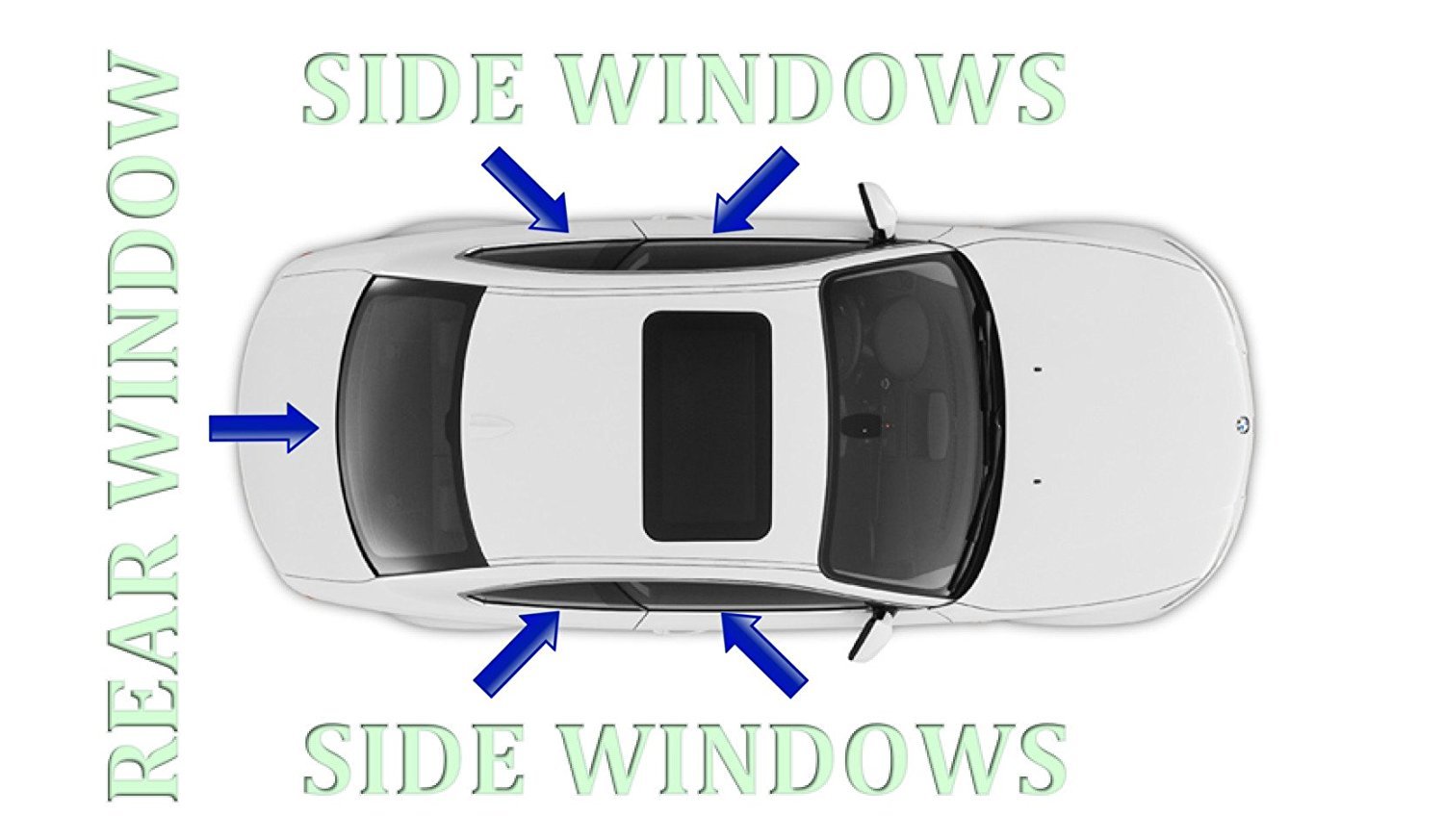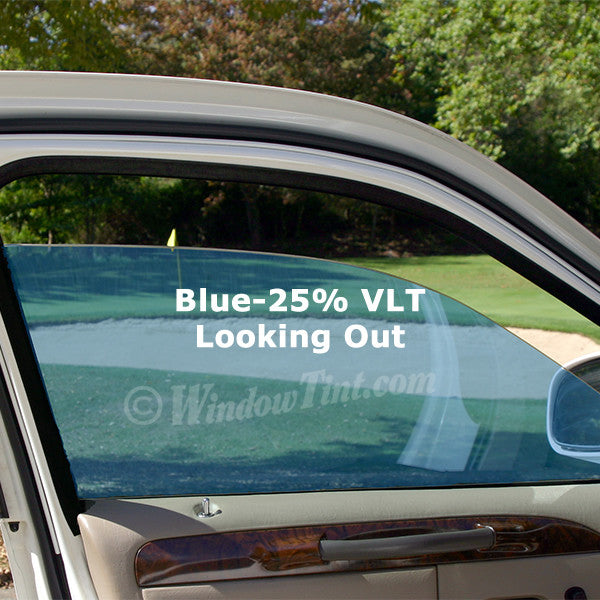Every little thing You Need to Find Out About Auto Home Window Tinting for Your Lorry
Car home window tinting is a practical enhancement for many car owners. It supplies benefits such as enhanced convenience and power performance. Different tint films deal with different requirements and choices. Understanding legal laws and picking the ideal tint percentage is essential. The installment procedure and correct maintenance also play significant duties in ensuring the long life of the tint. What other aspects should one think about prior to choosing on home window tinting?
Benefits of Car Home Window Tinting
Some vehicle owners might forget it, automobile window tinting offers various benefits that improve both the driving experience and the automobile's long life. One of the key benefits is the reduction of warmth build-up inside the vehicle, enabling a more comfy adventure, especially during heat. This can lead to reduced reliance on cooling, enhancing fuel efficiency.Additionally, window tinting supplies security against damaging UV rays, which can cause skin damages and fade interior materials over time. By blocking these rays, the tint assists preserve the car's inside and keep its resale value.Moreover, colored home windows can enhance personal privacy and safety, as they make it much more tough for outsiders to see inside the lorry. This included layer of defense can discourage potential theft. On the whole, car window tinting functions as a sensible investment that adds to the automobile and both convenience's overall wellness.
Kinds Of Window Color Films
When taking into consideration automobile window tinting, automobile owners run into a selection of home window color movies, each made to meet particular demands and preferences. The initial group is dyed home window film, which supplies a standard level of privacy and UV defense while being cost-efficient. Next, metalized films incorporate tiny metallic fragments, mirroring warm and enhancing toughness, although they may conflict with electronic signals.Ceramic movies are one more choice, known for their exceptional warm being rejected and clearness, supplying high performance without signal interference. Crossbreed movies integrate features of dyed and metalized films, striking a balance between expense and performance. Each type of window tint film offers distinct benefits, enabling vehicle owners to pick based on their details demands, such as warm control, look, and budget plan considerations. Comprehending these alternatives is important for making a notified decision pertaining to vehicle window tinting.
Comprehending Legal Laws
When taking into consideration automobile home window tinting, it is essential to recognize the legal guidelines that control color darkness limitations and windscreen tint requirements. These laws can vary substantially from state to state, affecting what is acceptable for automobile owners. Acquainting oneself with these laws guarantees compliance and aids prevent potential penalties or penalties.
Tint Darkness Limitations
How can car proprietors ensure they stay compliant with local laws regarding home window tinting? Understanding tint darkness limitations is vital. Each state has details guidelines that dictate the permitted degrees of darkness for home window tints, which are measured by Visible Light Transmission (VLT) percentages. Usually, front-side windows should allow a greater percent of light contrasted to back windows. Some states might permit just 30% VLT for front home windows, while the rear windows might be permitted to have notably darker colors. To assure conformity, vehicle owners ought to consult state guidelines or local police for accurate information. Furthermore, licensed tinting professionals can offer insights about lawful limits, ensuring that vehicle proprietors make notified choices.
Windshield Color Regulations

State-Specific Regulations
Guiding with the landscape of state-specific regulations relating to automobile window tinting requires careful focus to information, as guidelines can differ significantly from one state to one more. Each state has its very own set of rules regulating allowable tint portions, types of materials, and positioning on vehicle home windows. As an example, some states allow darker tints on rear home windows while prohibiting them on front windows, while others have stricter overall restrictions. Additionally, particular states mandate making use of specific products or call for certification from installers. Failing to abide by these guidelines can cause fines or the need to remove non-compliant color. Vehicle proprietors must consult their state's Division of Electric motor Cars or appropriate authority to assure adherence to regional regulations.
Selecting the Right Tint Percentage
When picking the ideal color portion for a lorry's windows, one must consider numerous variables that affect both appearances and functionality. Tint portions typically vary from 5% to 70%, with lower percents giving darker tones and greater percentages allowing more light in. A darker tint can improve personal privacy and decrease glare, while a lighter color can keep presence and follow legal restrictions.Furthermore, individual choice plays a substantial role in this choice. Some people may choose the streamlined appearance of darker colors, while others might favor an extra open, airy feel. In addition, the vehicle's function need to be taken into consideration; as an example, those utilizing their vehicles for business functions could select lighter colors to preserve a specialist look.Ultimately, the right tint percentage equilibriums personal style, convenience, and adherence to regional regulations, guaranteeing an enjoyable tinting experience.
The Installation Refine
A successful setup of home window tint needs mindful attention to detail and the right tools. The procedure typically starts with complete cleaning of the home windows to eliminate dust, debris, and dust, assuring correct bond of the film. As soon as the surfaces are prepared, the installer measures and cuts the color movie to fit each home window accurately.Next, the film is positioned on the glass, often utilizing a solution to promote simple adjustment and avoid air bubbles. Warmth is sometimes put on the film to adjust it to the window's contours, boosting its look and longevity. After validating a smooth fit, the installer carefully trims any excess movie along the edges.Finally, the installer checks for blemishes and validates all sides are safe and secure. This meticulous method is essential not only for looks yet likewise for accomplishing the preferred performance advantages of home window tinting, such as UV defense and warm decrease.
Upkeep and Look After Tinted Windows
Correct maintenance and care are important for maintaining the stability of colored home windows. Efficient cleaning strategies, the evasion of hazardous chemicals, and normal evaluations for damages play crucial duties in making certain durability. By adhering this post to these guidelines, car owners can keep the visual and practical benefits of their window tint.
Cleaning Up Methods for Tint
Preserving the clarity and durability of tinted windows calls for details cleansing techniques customized to the film's delicate surface. It is necessary to make use of a soft microfiber cloth to stay clear of damaging the color while cleaning. A mild option of water and a few declines of light meal soap can efficiently eliminate dust and crud. It is recommended to use the cleaning service to the cloth, instead than directly onto the tinted surface area, to protect against dampness from permeating into the sides of the movie. Mild, circular activities ought to be used to clean up the windows completely. Routine cleaning assists maintain exposure and stops accumulation, ensuring that the tint continues to be in prime problem gradually. Adhering to these methods will extend the life of colored windows.
Staying Clear Of Harmful Chemicals
Many house cleansing products are effective on various surfaces, they can present significant threats to tinted home windows. Chemicals such as ammonia, bleach, and specific solvents can weaken the color movie, bring about discoloration and peeling. People need to choose for pH-balanced cleaners especially developed for colored home windows. Additionally, using soft microfiber towels will assist avoid scratches and preserve the tint's integrity. Normal maintenance is important; subsequently, staying clear of severe scrubbing or abrasive materials is important. It is advisable to review product labels very carefully to verify compatibility with home window colors. By selecting the right cleaning services and devices, automobile proprietors can preserve the look and performance of their colored windows, guaranteeing a longer life expectancy and peak efficiency.
Evaluating for Damages
Regular inspections of colored windows are essential for determining any kind of indications of damage that may jeopardize their effectiveness and look. Owners must seek gurgling, peeling, or staining, as these issues can indicate inadequate setup or direct exposure to harmful elements. It is recommended to check the edges of the movie where peeling off may start and inspect for any scrapes that might affect visibility. Additionally, ultraviolet (UV) rays can cause the color to break down over time, so checking its performance in obstructing UV light is essential. If any type of damages is found, prompt action should be taken, which may include expert fixing or replacement. Keeping colored home windows not just improves looks yet also warranties proceeded security for both travelers and the lorry interior.
Typical Myths About Home Window Tinting
What false impressions surround window tinting for automobiles? Many individuals think that all home window tints are unlawful, however laws vary by state, enabling particular degrees of tinting. One more common misconception is that darker colors block even more warmth; nevertheless, the performance of window Check This Out movies depends upon their modern technology rather than darkness. Some individuals likewise believe that window tinting is solely for aesthetics, neglecting its advantages, such as UV defense and glow reduction. Furthermore, many assume that window tinting will certainly damage their automobile's glass, yet professionally used tints can really boost glass sturdiness. Finally, there is an idea that window colors block presence, yet high-grade films are developed to keep clear sightlines while providing privacy. Understanding these misconceptions assists customers make notified choices relating to home window tinting, ensuring they delight in the full variety of advantages it offers.
Regularly Asked Inquiries
How Much Time Does Window Tinting Usually Last?
The longevity of window tinting varies based upon elements such as setup high quality, film type, and environmental problems. Generally, high-grade tint can last anywhere from 5 to 10 years before calling view website for substitute or reapplication.
Can I Remove Window Tint Myself?
Getting rid of home window color oneself is possible, though it might be tough. Individuals must utilize a warmth resource and glue cleaner to reduce the process, but caution is suggested to stay clear of harming the automobile's glass or interior.
What Devices Are Needed for Do It Yourself Home Window Tinting?

Will Window Tinting Damage My Car's Glass?
Home window tinting, when applied appropriately, usually does not harm a vehicle's glass. Nevertheless, incorrect installment or low-grade movies might lead to peeling, bubbling, or scratching, potentially endangering the integrity of the glass over time.
Can Tinted Windows Affect My Lorry's Resale Worth?
The impact of tinted windows on a lorry's resale value can differ. While some buyers appreciate the added personal privacy and UV security, others might view it as a prospective issue, potentially affecting resale favorably or negatively. When taking into consideration vehicle window tinting, automobile proprietors run into a variety of home window tint films, each made to satisfy certain requirements and choices. When taking into consideration vehicle window tinting, it is vital to understand the legal policies that control tint darkness restrictions and windscreen color requirements. Commonly, front-side windows must permit a higher percent of light compared to back home windows. Some states might allow only 30% VLT for front home windows, while the back home windows could be permitted to have significantly darker colors. Some states allow darker colors on rear windows while banning them on front windows, while others have more stringent total restrictions.